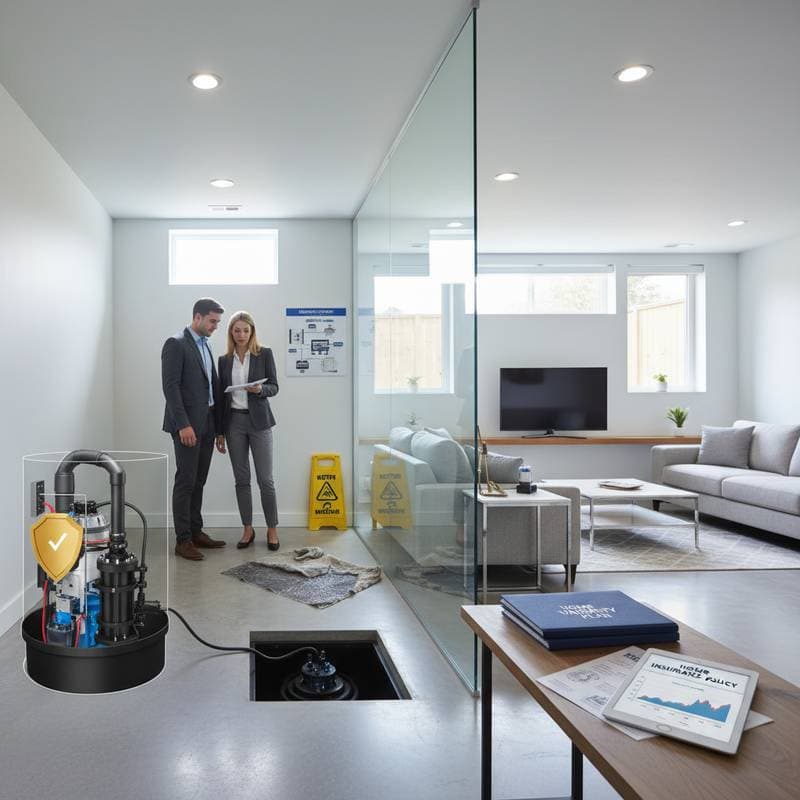What Home Warranties Cover for Sump Pumps: Essential Insights
Sump pumps serve as vital barriers against basement flooding. A failure in this equipment often results in substantial damage and repair expenses. Homeowners frequently expect their home warranty to handle such issues seamlessly, yet coverage details differ across policies. Grasping the scope of protection enables better preparation and avoidance of unforeseen costs related to your home's drainage setup.
Understanding Sump Pump Coverage Under Home Warranties
Home warranties address mechanical failures in key systems and appliances. Sump pumps occupy an ambiguous position, sometimes classified as plumbing components or requiring optional endorsements. Review your policy's definitions and stipulations to determine applicable conditions.
What Is Typically Covered
Standard home warranty plans with sump pump inclusion handle repairs or replacements due to normal wear and tear. Coverage generally encompasses:
- Motor failures from aging or inherent defects
- Switch issues that hinder activation
- Failures in internal components impeding drainage
- Electrical problems directly impacting pump function
Providers approve claims when the sump pump ceases operation during routine conditions, provided no external harm or faulty setup contributes to the issue.
What Is Not Covered
Policies impose several limitations on coverage. Common exclusions include:
- Damage from flooding triggered by the pump's failure
- Problems arising from homeowner neglect in installation or upkeep
- Water damage to structures, finishes, or personal items
- Disruptions in power supply not linked to the pump
- Auxiliary batteries or secondary pumps without explicit policy mention
In essence, protection focuses on the pump's mechanical elements, excluding consequences of its malfunction.
Common Reasons for Sump Pump Failure
Knowledge of typical failure modes assists in evaluating warranty applicability. Sump pumps encounter issues through various channels, influencing claim outcomes.
- Power outages interrupting energy supply
- Switch failures due to accumulated debris or rust
- Blockages in discharge pipes restricting water expulsion
- Motor overload from excessive operation or degradation
- Inadequate pump capacity relative to water volume
Claims receive approval more readily when failures trace to standard usage rather than oversight or environmental factors.
How to File a Claim for a Sump Pump Failure
The claim process proceeds efficiently with proper procedures. Act promptly to minimize potential damage.
- Record details of the malfunction, including timing, sounds, or odors observed.
- Notify your warranty provider without delay to initiate the report.
- Arrange for an evaluation by a designated technician.
- Verify policy terms to ensure qualification prior to any work.
- Retain all invoices and inspection findings for potential challenges.
Expect the provider to seek proof that wear and tear, not outside influences, caused the breakdown.
DIY vs Professional Repairs
When a sump pump falters, decide between self-handling or professional intervention. Each approach carries implications for warranty validity.
- Simple tasks, such as clearing debris or resetting breakers, suit DIY efforts.
- Complex needs like component swaps, electrical adjustments, or reinstallations demand expert handling.
Self-initiated alterations risk nullifying coverage. Consult your policy before disassembling or modifying the unit.
Your Sump Pump Warranty Questions, Answered
Industry professionals address frequent inquiries below.
Does a home warranty cover sump pump replacement?
Yes, replacement or repair qualifies if the failure stems from normal wear and tear, your plan includes this coverage, and costs stay within specified limits.
Are backup sump pumps included in coverage?
Typically no. Battery-operated or auxiliary units count as distinct systems, often necessitating extra endorsements.
Does the warranty cover basement flooding?
No. Policies exclude water intrusion, mold remediation, or asset losses. Homeowners insurance handles such perils if water backup riders apply.
Do I need to maintain the pump for coverage to apply?
Yes. Neglect in routine care can invalidate claims. Perform regular cleaning, testing, and checks as homeowner duties.
Can a warranty deny coverage for improper installation?
Yes. Non-compliance with manufacturer guidelines or flawed setup permits rejection by the provider.
What are typical repair costs without a warranty?
Expenses vary by components and labor. A full sump pump replacement might exceed several hundred dollars, with discharge line additions increasing totals further.
Should I include sump pump coverage in my warranty plan?
Residents in rainy regions or with elevated water tables benefit from this addition. It offers reassurance against steep repair bills.
What is the difference between a home warranty and homeowners insurance for sump pump issues?
Home warranties target mechanical breakdowns of the equipment. Insurance addresses resultant flood damage under relevant provisions.
How can I prevent sump pump failure?
Conduct periodic tests by adding water to the pit and confirming activation. Clear the pit of buildup and verify discharge path openness. Install battery backups for outage-prone locations.
Can I choose my own technician for sump pump repairs?
Policies vary. Some permit preferred contractors with upfront payment and reimbursement requests. Others mandate approved networks to ensure coverage.
Steps to Secure Effective Sump Pump Protection
Evaluate your needs systematically to determine coverage suitability.
- Gauge flood risks based on past incidents or local hydrology.
- Inspect existing equipment for age and usage intensity.
- Examine policy details on inclusions, caps, and restrictions.
- Weigh premium costs against projected repair outlays.
- Add endorsements for uncovered elements like backups if necessary.
This approach aligns protection with your property's vulnerabilities.
Strengthening Your Basement Defenses Through Maintenance
Proactive habits extend equipment life and bolster claim success. Integrate these practices into your routine.
- Examine the sump pit quarterly for sediment or obstructions.
- Simulate operations monthly by introducing water and observing response.
- Equip with uninterruptible power sources to counter blackouts.
- Store policy paperwork in an easily accessible location.
- Document all upkeep activities to demonstrate diligence.
Such measures not only preserve functionality but also fortify your financial safeguards against water threats.





